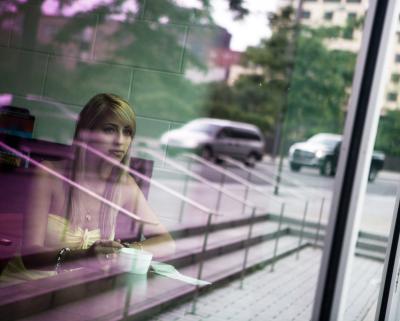
Glass manufacturers can make colored glass, or you can tint your windows with a film of color. Glass tints are useful in automobiles, businesses and in homes to reflect light and heat. Tinted glass can also reduce the amount a person outside a car or a building can see while allowing people inside to see out. Automobile owners may be restricted by state law to certain colors and intensities of window film for safety purposes.
Bronze is a traditional glass tint color for homes and businesses. The color blocks some solar heat and glare from entering a building. For example, bronze glass blocks about a third of visible light. The bronze color also blocks about 60 percent of ultraviolet light. Light passing through bronze glass does not significantly affect the appearance of the colored items in a room, but does give the room a slight glow. The window color complements buildings made of brick and stone. You can also get bronze glass film tints for automobile windows.
Gray is another traditional glass tint color. A light gray tinted glass blocks slightly more visible and ultraviolet light from entering a building than bronze glass. The ultraviolet light is responsible for fading material on furniture or carpets, so if this is a concern, gray glass is more suitable for a building than bronze. Automobile window tint films can also be gray.
Glass and glass films can also be dark gray. The dark gray glass controls glare and only allows about a quarter of visible light through the pane, making it ideal for privacy concerns but not appropriate in rooms that need a lot of natural light.
Green glass allows more visible light than bronze or gray glass to enter a building. A light green glass product may be spectrally selective and high performance, which means that while the glass allows visible light to enter, it also blocks the infrared heat portion of the light, resulting in a cooler room. Car windows may also have green tinted films.
Light blue glass can also be spectrally selective, like light green glass, and shares most of the same properties. This type of glass (or light green glass) is suitable as the outside portion of a double glazed window. Car windows can also have blue tinted films in certain states, but the color is banned in some states according to the International Window Film Association.
Red, yellow and gold are less common window tints than bronze, gray, blue or green. The colors are more common on automobile windows as a film than on buildings. It is illegal to use these colors on automobile windows in many states, according to the International Window Tint Association.